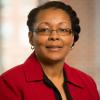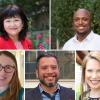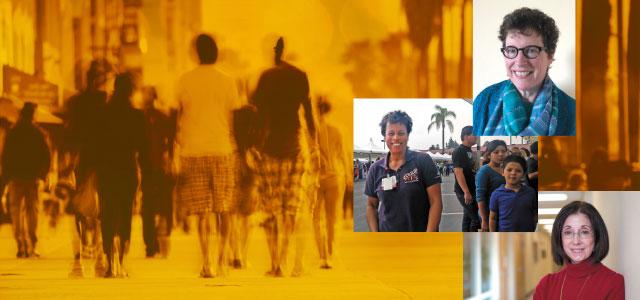
Catherine Dodd, Michele Rigsby Pauley and Linda Centore
Three Nurses Tell Tales of Their Cities’ Health
The health of a large urban population – typically diverse in everything from age, race and ethnicity to sexual preference, language, socioeconomic status, living situation and health status – depends on an almost unfathomable mix of factors.
Certainly the accessibility of high-quality, culturally sensitive health care (including primary, emergency, specialty, mental health and oral health care) is the most obvious factor. Yet as anyone involved in public and population health knows, insurance coverage, the availability of nutritious food, air quality, community violence, transportation, job- and family-related stress and many other things also contribute.
Addressing all of these concerns is the ongoing challenge for health professionals in big cities. More often than not, advanced practice nurses are at the center of the struggle. Whether it’s a clinical nurse specialist (CNS) in an intensive care unit, a nurse practitioner (NP) delivering primary care at a community clinic, a public health nurse formulating policy or any of a number of other roles, nurses’ unique training and experience often provide the sinew needed to tie together critical contributors to an entire population’s health.
To illustrate this, Science of Caring spoke recently with three distinguished UC San Francisco School of Nursing alumnae – each a UCSF 150th Anniversary Alumni Excellence Award winner – who play outsized roles in maintaining the health of populations in two of California’s largest cities:
- Michele Rigsby Pauley: Mobile Health Care for LA’s Underserved Kids
- Catherine Dodd: Policy Expertise to Protect the Health of San Francisco Workers and Retirees
- Linda Centore: Crafting Sensitive Dentistry for Those Most in Need
Michele Rigsby Pauley: Mobile Health Care for LA’s Underserved Kids
“We’d already been operating for almost 20 years, and I thought our reputation would carry below the 10 freeway, but when we went to Watts, it was like starting all over again. We had to develop relationships and trust because we’d never had to engage this particular community. It was yet another learning opportunity, but now we’re an integral part of the neighborhood.”
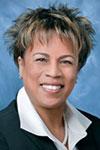 Michele Rigsby Pauley Michele Rigsby Pauley (MSN, CPNP ’89) is nationally recognized for her role as program director for the COACH for Kids and Their Families® program at Cedars-Sinai Medical Center in Los Angeles. She began the program with one mobile clinic more than two decades ago. Today, COACH for Kids delivers medical, mental health, case management, nutrition and dental services to children (ages 0-18) in 28 different zip codes in the Los Angeles area – mostly underserved neighborhoods with a shortage of providers, like Crenshaw, Compton and Watts.
Michele Rigsby Pauley Michele Rigsby Pauley (MSN, CPNP ’89) is nationally recognized for her role as program director for the COACH for Kids and Their Families® program at Cedars-Sinai Medical Center in Los Angeles. She began the program with one mobile clinic more than two decades ago. Today, COACH for Kids delivers medical, mental health, case management, nutrition and dental services to children (ages 0-18) in 28 different zip codes in the Los Angeles area – mostly underserved neighborhoods with a shortage of providers, like Crenshaw, Compton and Watts.
Defining a Role
After working in the pediatric unit at UCSF Medical Center and receiving her master’s degree and pediatric nurse practitioner credential in 1989, Rigsby Pauley returned to her native Los Angeles to become one of the first NPs at Cedars-Sinai. “I had to define my own role and found a niche helping people understand wellness and safety issues for children,” she says.
Then, in 1992, Cedars-Sinai began thinking about implementing a mobile health program. It purchased a van and asked Rigsby Pauley to get the unit up and running. A maiden voyage to LA’s Skid Row showed Rigsby Pauley and her team – an RN and a driver – that it didn’t make sense to simply diagnose conditions and write prescriptions if the patients’ limited resources and living situations made them ill equipped to get the medications themselves – or get the services needed to address the social issues affecting their health.
“So I worked with our pharmacy to come up with 100 different medications we could dispense at no charge and also added a social worker who could help families with mental health and nonmedical issues,” says Rigsby Pauley.
Since that time, she and her team have learned a lot more about how to maximize their impact.
Making Connections
Typically, the first order of business, she says, is for partnering school nurses and community site administrators to identify the unique concerns of children and families they serve. This helps Rigsby Pauley and her team pinpoint where they can help most, forge appropriate partnerships with community clinics and social service agencies and conduct proper outreach before setting up shop outside of a school or community site’s gates.
“If we have a relationship with the parents, the neighborhood social service agencies and the local community clinics, we can be more effective,” she says.
Once set up, the mobile clinic is open to the whole community. While the clinic is primarily focused on pediatric primary care, the nurse practitioners, RNs and social workers who staff the clinic will also assess family needs and provide services such as tuberculosis testing and blood pressure screenings for parents. “It’s an opportunity to start the dialogue, get them engaged in their health care needs, and then we can connect them and their children with services in their community,” says Rigsby Pauley.
Adding Complementary Programs
The passage of the Affordable Care Act has helped many of these families increase their ability to pay for care at local providers, but also presented a new set of challenges. “Having health insurance is one thing; access to care is completely different,” says Rigsby Pauley. “If you’ve got five kids and have to take three buses to a Medi-Cal managed care provider on the other side of town, it can be very challenging.”
Therefore, when Covered California – the online marketplace where Californians can get brand-name health insurance under the Affordable Care Act – launched, Rigsby Pauley and her entire team became certified outreach and education counselors, so they could help teach people how to sign up and use their benefits effectively. A big part of their role today is helping families understand how to navigate the health care system, even as the COACH for Kids team continues to treat and provide services in the mobile clinics for transient populations and those not eligible for insurance.
Moreover, as the team has recognized unfilled needs, it has added complementary services.
- Social workers run support groups and have developed curricula for families on parenting and health maintenance.
- A dental program serves children with unmet oral health needs, both through screening and referrals in the mobile clinic and through a dental hygienist who does classroom visits to provide oral health education, dental screenings and fluoride varnish applications for children pre-K through high school.
- The team’s nutrition educators have designed an early-intervention program for underserved children that includes basic nutrition education and gardens at local schools and community sites.
Such innovations demonstrate what Rigsby Pauley feels is one of the most important lessons she’s learned in the past 20-plus years: always be prepared to adapt. “Populations change, demographics shift,” she says. “During the recession, for example, many more families simply needed the basics such as food and housing, especially as local resources shrank. We often have to shift gears depending on where people are each day.”
But adapting doesn’t always mean adding a service. For example, at one point her team considered an adolescent-focused mobile clinic, until they realized it made more sense to partner with the growing number of school-based health centers.
“We don’t have the budget to do everything,” says Rigsby Pauley. “We only add when we can fill a need for pediatric primary care that can’t be filled better elsewhere. If we do that and strengthen our community partnerships, we can stay true to our own mission and goals.”
Catherine Dodd: Policy Expertise to Protect the Health of San Francisco Workers and Retirees
“The health of a community looks different through the lens of a nurse than it does through the lens of a physician or community member.”
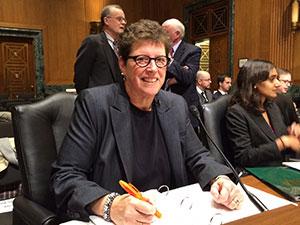 Catherine Dodd testifies at a Senate Finance Committee hearing on Social Security. As director of the San Francisco Health Service System, Catherine Dodd (BSN ’79, MSN ’83, PhD Sociology ’07) is responsible for negotiating and administering health benefits for more than 113,000 employees, retirees and their dependents in the City and County of San Francisco, the San Francisco Unified School District, City College of San Francisco and the Superior Court of San Francisco – as well as for implementing wellness programs designed to keep many of these people healthy in a city of some 852,000 residents. Dodd – who has three degrees from UCSF School of Nursing – also chairs the National Committee to Preserve Social Security and Medicare, a prominent national lobbying group.
Catherine Dodd testifies at a Senate Finance Committee hearing on Social Security. As director of the San Francisco Health Service System, Catherine Dodd (BSN ’79, MSN ’83, PhD Sociology ’07) is responsible for negotiating and administering health benefits for more than 113,000 employees, retirees and their dependents in the City and County of San Francisco, the San Francisco Unified School District, City College of San Francisco and the Superior Court of San Francisco – as well as for implementing wellness programs designed to keep many of these people healthy in a city of some 852,000 residents. Dodd – who has three degrees from UCSF School of Nursing – also chairs the National Committee to Preserve Social Security and Medicare, a prominent national lobbying group.
Such positions are the latest stops in a career in which Dodd has parlayed her nursing experience and passion for policy into a series of jobs that continue to have a powerful influence on the health and wellness of hundreds of thousands of people in San Francisco and many more around the country.
From Canneries Through the Speaker’s Office
After she became an RN in 1979, Dodd’s first job was delivering mobile health in California canneries. She then worked as a perinatal nurse in San Francisco, eventually getting active in the local nurses association. When Dodd became angry over an effort to decertify the nurses’ collective bargaining organization, former School of Nursing Dean Margretta Styles encouraged Dodd to fight the decertification and go back to school to better prepare herself for future challenges. Eventually, she did just that, even as she tackled a dizzying array of policy projects and career shifts.
Early on, working as a legislative aide, she helped craft the legislation that created the San Francisco Health Commission, the governing and policymaking body of the San Francisco Department of Public Health. She says this first opportunity to make sure nurses have a seat at the decisionmaking table has been a hallmark of how she’s functioned in every position she’s held since.
She was director of the Women’s Health Center at San Francisco General Hospital. She worked for San Francisco Supervisor Kevin Shelley, an old friend. She was director of government and public affairs at Kaiser Permanente and then held a similar position for the California Nurses Association. It was there she first connected with Congresswoman Nancy Pelosi, a meeting that propelled Dodd into an active role in local and national Democratic politics.
Eventually, she became involved in the American Nurses Association Political Action Committee and impressed the first Clinton administration with her work on Hillary Clinton’s health care reform proposal. President Clinton appointed Dodd a western regional director for the US Department of Health and Human Services (HHS); in this capacity she represented HHS in the poorest communities along the US border with Mexico, in inner-city slums and in the isolated island communities of the western Pacific. She says that in each situation, she sought to bring nurses to the discussion tables.
Then, in 2001, as Dodd entered a PhD program at the School of Nursing, Congresswoman Pelosi – who was running to become Speaker of the House – asked Dodd to become her district director. Dodd stayed in the position for five years, until she was chosen to serve on the San Francisco Health Commission, a job she relished not least because it brought her career full circle.
“When I was there, I was reminded again that the health of a community looks different through the lens of a nurse than it does through the lens of a physician or community member,” she says.
Two years later, then Mayor Gavin Newsom tapped Dodd to become his deputy chief of staff for Health and Human Services, where she was the liaison on issues from health care, aging and violence through food policy, environmental health and human trafficking. She agreed to take the position, but only after securing a promise that another nurse would be appointed to take her place on the commission. About a year and a half later, Dodd took her current job.
Negotiating for Health Services on Behalf of City Workers
It has proven to be a fascinating challenge. Since 1937, health services in San Francisco have been a guaranteed right for city employees; they are never a part of union negotiations. Instead, the Health Service System negotiates with insurance companies to get the best possible benefits and prices for the city and its workers.
Though Dodd had little experience with insurance, over the years she’d learned the art of negotiation, so it’s not surprising that under her leadership, San Francisco offers coverages rarely seen in other cities, such as transgender benefits and soon, perhaps, coverage for surrogate and adoptive parents. She’s insisted on performance guarantees – for example, 80 percent of female members must get mammograms or the insurance companies return some of their premiums – and is seeking one to ensure that end-of-life counseling is covered. She is formulating standard approaches to mental health benefits through her work with the Pacific Business Group on Health.
Because of her position, Dodd also pushes providers hard on the accessibility, efficiency, coordination and quality of care, including meeting quarterly with San Francisco hospitals to discuss such things as admissions, length of stay, use of generic medications and readmits. And, in response to the incentives of the Affordable Care Act, she played an instrumental role in the creation of an accountable care organization (ACO) to serve city workers.
“ACOs haven’t saved a lot of money yet, but they have changed the kind of care we give,” she says. “It’s more comprehensive, it’s more available after hours.”
Dodd has also been involved in the environmental health movement for years and has used her current position to draw together San Francisco’s female firefighters (who have a high burden of breast cancer) and environmental health experts to launch a research study on firefighters’ exposure to toxins known to cause breast cancer.
Finally, Dodd has been instrumental in the creation of the Health Service System Wellness Center and related programs, which offer a variety of activities that connect people with other essential services. “We can’t bend the cost curve much more, so we have to keep people healthier,” says Dodd.
The Need for Transparency
At the moment, however, Dodd’s primary focus is creating more transparency around quality and utilization, especially as she races to adapt to the so-called Cadillac tax, a component of the Affordable Care Act. This nondeductible 40 percent excise tax goes into effect in 2018 on employer-sponsored health plans with premiums that exceed a dollar threshold.
Dodd believes, however, that costs could come down for the types of expansive benefits she has pushed for if patients understood better exactly what they’re paying for and could make more informed choices. She says her nursing education and her study of sociology make her particularly attuned to such concerns, because she has a strong understanding of what constitutes essential care as well as the needs of individuals and families.
“That’s been the biggest focus of my work of late, because we cannot solve this crisis of health care costs without transparency,” says Dodd.
Linda Centore: Crafting Sensitive Dentistry for Those Most in Need
“This patient was threatening suicide over a bad tooth that the dentists told him had to come out. It was really a cry for help; he was between therapists. While the dentists are trained to keep patients healthy, the patients get to decide when they want to let go of a body part, and sometimes we need to give them time to digest bad news. Part of my role is to negotiate, based on patients’ emotional health and their values, and find something that will work for them.”
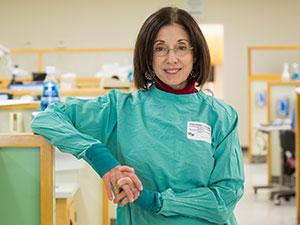 Linda Centore at the UCSF Dental Center (photo by Elisabeth Fall) In her work at the UCSF Dental Center at Parnassus, Linda Centore is a Renaissance woman. A PhD psychologist, board-certified primary care NP and experienced psychiatric RN, Centore has also conducted research on the links between pain and patients’ oral health. Today, she splits her time among clinical and mentoring work at the Dental Center, designing curricula and teaching classes, and serving on a variety of UCSF committees and services aimed at improving treatment of the city’s underserved.
Linda Centore at the UCSF Dental Center (photo by Elisabeth Fall) In her work at the UCSF Dental Center at Parnassus, Linda Centore is a Renaissance woman. A PhD psychologist, board-certified primary care NP and experienced psychiatric RN, Centore has also conducted research on the links between pain and patients’ oral health. Today, she splits her time among clinical and mentoring work at the Dental Center, designing curricula and teaching classes, and serving on a variety of UCSF committees and services aimed at improving treatment of the city’s underserved.
Finding a Fit
Centore became a psychiatric nurse in 1973 and spent much of the next 13 years working on locked units with patients experiencing psychiatric emergencies. During those years, she went to school part-time at San Francisco State to get her bachelor’s degree in psychology. When she decided she wanted to see her own patients, she returned to school again, to earn her PhD from the California School of Professional Psychology.
While still working on her dissertation, she landed a position with Charles McNeill, an internationally known orofacial pain specialist at UCSF School of Dentistry, who wanted a psychologist on his team to help his patients cope with persistent pain.
It was a perfect fit. Centore had long been interested in the intersection of pain and psychology; in fact, it was the subject of her dissertation. Once she earned her doctorate, Centore took a faculty position in the School of Dentistry. Within a few years, she leaped at the opportunity to spearhead an effort to help all dental students better understand their patients’ fears and concerns about treatment.
“Dentistry is a surgical specialty – there’s often local anesthesia that involves an injection and an invasive intrusion into an orifice – and many of our patients have concurrent physical and mental health conditions,” says Centore. “I believed that I could translate ideas from psychology and nursing to help students better understand the patient’s point of view.”
That effort eventually became the path to her current role, where she spends half her time in the dental clinic, modeling for students how to gain that understanding of patients, as well as serving as a patient advocate. The other half of her time is as a classroom educator and chair of the Division of Behavioral Sciences and Community Dental Education. She is responsible for three separate areas of the curriculum: behavioral science; ethics and professionalism; and cultural competence, awareness and humility. In addition, at the time of this writing, Centore is interim program director for service learning, in charge of 14 externship sites.
She is also collaborating with faculty members from both dentistry and nursing to help patients with severe mental illness access dental care. “I’m the liaison in the dental clinic who assesses patients for their ability to handle dentistry under local anesthesia versus more sedation, and I am helping to educate the student and faculty teams about how best to manage and deliver safe patient care for individuals with schizophrenia and bipolar disorder,” she says.
Becoming an NP
Though her role in the School of Dentistry was long established, Centore returned to the School of Nursing to earn her NP credential in primary care in 2008.
“I felt I needed more medicine background,” she says. “I’m an eternal student, and I wanted to be a better hybrid.… It was hard to go to school and do an 80 percent job, but I loved everything I learned, and I continue to maintain two licenses, as a board-certified NP and a psychologist.”
She says that her NP training has deepened her role in the clinic, where she tests students on their ability to do a proper medical risk assessment and to communicate effectively with patients. This can be particularly important with the underserved patients who make up much of the patient population at the UCSF clinic. As noted above, many have limited access to care, are physically and/or mentally disabled and may have had bad dental experiences in their pasts.
“These people require extra time and energy,” says Centore.
Thus, in the clinic, she takes a psychologically informed approach to history taking and uses her nursing and NP training to piece together what are often complex health histories. Both disciplines help her develop the necessary therapeutic relationships and, in turn, help her know where and how to connect these patients to other pieces of the health care system.
“My background as a nurse and a psychologist makes me so much more valuable in this regard,” she says. “If we can get a sense of the patients’ core values, health beliefs and personal preferences, we can create a bridge that makes therapeutic relationships work.”

